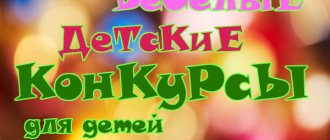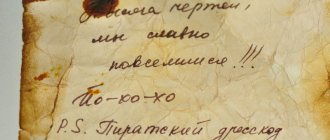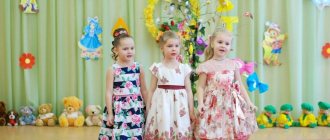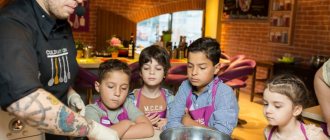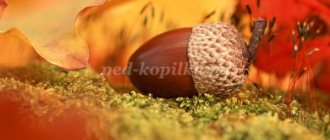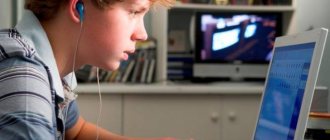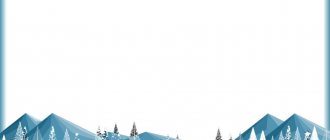To space with children! A selection of amazing space-themed games to play at home
How can you tell your child about space in an accessible way? Of course, in a playful way. We offer a selection of amazing space-themed games to play at home.
First of all, we enter the space school, because, you know, whoever gets into the astronauts is not accepted. What should every astronaut know and be able to do?
The structure of the Earth and the Universe is basic knowledge, let’s start with it. It’s very easy and accessible to tell kids about this in a simple playful way - we’ll make a model of our planet (inner core, outer core, mantle and crust), as well as the cosmos itself (more precisely, a piece of it), arrange the stars, and arrange our luminary in the middle - the Sun and around it are all the planets of our system, for each planet we draw an orbit, simultaneously explaining what it is.
In such a game it is easy to talk about the cosmic structure, the names of the planets, to fantasize about whether there is life somewhere else besides Earth and what this life is like.
An empty box, a garland and a switched off light will help you see the constellations in your own room. We make small holes in the box so that the garland bulbs can be placed in them and, according to the diagrams (which are easy to obtain on the Internet), we lay out (or rather stick in the bulbs) the constellations we need. Children will listen and participate with much more interest if, for example, they are told about their constellations (Aries, Taurus, etc.). How did it appear, why was it called that way and not otherwise.
Let’s not forget about everyday questions - how do astronauts eat in space? This topic always arouses interest. We created our own space menu. They put jelly and fruit puree into ziplock bags and felt almost like real astronauts.
The only thing we lacked for complete happiness was the space flight itself. But this turned out to be not a problem.
Lego figures are us - dad, mom, children. We put on spacesuits, the role of which is played by foil. Children cope with this quickly. The only things missing are rockets, Lego bricks with a countdown and “puuuuck!” and here it is - endless space.
And first of all, we will fly to our faithful satellite, to the Moon.
To help children navigate the distance from the Earth to the Moon, we can give several examples. To fly to the Moon by plane, it will take about 20 days, by car at a constant speed of 90-100 kilometers per hour - up to six months. HALF A MONTHS!
One of the most amazing and at the same time most dangerous things on the Moon is lunar dust. As everyone knows, sand penetrates everywhere on Earth, but dust on the moon is an extremely dangerous substance: it is fine, like flour, but at the same time very rough. Thanks to its texture and low gravity, it penetrates absolutely anywhere.
The role of lunar dust was played by rye flour, placed in a container and provided to the children for study. And we finally corrected the historical injustice - we placed the flag of the Russian Federation on the lunar surface (she said that the first and only ones who landed on the Moon were American astronauts).
NASA had numerous problems with lunar dust: it ripped astronauts' boots almost completely apart, penetrated ships and space suits, and caused "lunar hay fever" in unfortunate astronauts if they inhaled it. It is believed that with prolonged contact with lunar dust, any, even the most durable object can break.
They cleaned astronauts and spaceship elements from lunar dust, left marks from asteroids (throwing stones into flour), buried and dug up their arms, legs, astronauts and in general everything that was nearby. There is a version that flights to the Moon stopped because the astronauts met SOMETHING there that scared people. Something inexplicable. As Neil Armstrong said, “We were given the impression that the place was taken.” Well, my astronauts discovered SOMETHING - with many eyes, making strange sounds.
We discovered this and quickly shot into the rocket. We flew on.
And now we have arrived to our sister planet, Venus. Earth and Venus have a lot in common; they are the same in size.
The role of Venus was played by a box of soda. There are many craters on the surface of Venus, scientists believe that Venus was formed mainly after volcanic processes, due to a large number of volcanic eruptions, lava spills, the formation of craters and mountain ranges on the surface of the planet.
The pale yellow clouds that surround the planet contain droplets of sulfuric acid that fall on Venus in acid rain. The children first filled the craters with soda, and then poured colored water with citric acid on top. This was our acid rain. There was a stormy reaction, which greatly delighted the young cosmonauts.
Venus, the brightest of the planets. It shines so strongly that on a moonless night it can easily cast a shadow on the Earth. And it is also perfectly visible even without special equipment, the brightest star to the left of the Moon.
When our Venusian life ended, we boarded our rocket again and set off today for Mercury.
Mercury is a rocky planet; as the planet's core cools and contracts, Mercury's surface becomes wrinkled. Scientifically, these wrinkles are called “scarps.” Scarps can be very high and reach several hundred kilometers.
For us, the role of Mercury was played by a container with oatmeal; we placed a switched-on garland under the container and the look was truly not earthly.
There is no evidence of life on Mercury. Daytime temperatures can reach 430 degrees Celsius and drop to -180 degrees Celsius at night. It is unlikely that life as we know it could survive on this planet.
But oddly enough, it was we who witnessed the existence of this very incredible life. Yes, yes, we met THEM - aliens.
It's amazing how the human brain works - everything we come up with we have seen or heard somewhere and once. So it’s difficult to come up with this without relying on anyone’s experience, but simply out of thin air. But children succeed in this as well as possible.
- What if the planet where aliens live doesn’t need eyes? - the children decided.
“How are they not needed?” I ask. “How will they look?”
- There’s nothing to see there. “There’s nothing interesting there that needs to be looked at,” came the answer.
A child’s imagination has come into play, something you can’t keep up with. The children created something extraterrestrial. An alien without a body. Yes, he doesn’t need it. In addition, as my daughter stated, there is no gravity on the planet where it lives, and therefore this alien must be sticky in order to have good adhesion to the soil.
And there are no eyes or mouth, let alone ears and nose. But if you put eyes on it, it can see, if you put ears on it, then it can hear, and it speaks with the help of thoughts. And it takes the form of the vessel in which it is placed.
Our alien was made of paste and borax (sodium tetroborate, which is sold in any pharmacy), had a viscous structure, but almost did not stick to your hands.
His eyes grew larger and smaller, his legs, arms and other protruding parts of his body periodically appeared, and sometimes his heart and kidneys could be seen. And a bunch of other organs for which the children, of course, came up with names, but due to the difficulty of pronunciation, I will not be able to reproduce them (and the children forgot after 5 seconds what they just came up with).
When it became clear that the table was no longer enough for them and soon all this disgraceful splendor would be on the floor and walls of the kitchen, I brought a large plastic container. The daughter took out silicone baking molds, which immediately turned into UFOs, our disembodied comrades plunged into them and set off to fly across the Galaxies. With the addition of water, the molds slid along the bottom of the container as if on ice.
This is where I’ll probably end the story about our space travels. As can be seen from the above, flying into space is available to everyone, even without leaving your apartment.
Intellectual and educational game “Space Travel”
Intellectual and educational game for children and parents
“Space Travel”.
Target
: summarize and systematize children’s knowledge about space;
Tasks:
- consolidate children’s knowledge about the planets of the solar system, space technology;
-continue to teach how to work with algorithms and coding;
- cultivate a conscious, careful, emotional attitude towards the world around you;
-develop coherent speech, imagination, memory;
-develop figurative and spatial thinking;
— cultivate the ability to work in a team, empathize with each other, and the willingness to apply one’s knowledge.
-enrich parent-child relationships with the experience of joint activities;
-involve parents, through various types of activities, to participate in the educational process.
Preliminary work:
Search work to select illustrative material on the topic “Space”
.
Examination of albums, illustrations and photographs, a globe on the theme “Space”
.
Reading books and encyclopedias for preschoolers.
A selection of poems and riddles on the topic “Space”
.
Selection of didactic games in accordance with the topic.
Preparing a presentation “For children about space”
Equipment and materials:
Progress of the event:
Leading:
Hello guys and adults! I am glad that you responded to my proposal to spend this evening together with our large kindergarten family. I think you guessed what we will talk about today?! (answers) Of course, it is dedicated to Cosmonautics Day, the vast and unknown world of space.
And I want to suggest showing your knowledge in an intellectual game, where the children will “fight” with their parents. Where we find out which team is the most friendly, resourceful and smart.
I invite team members to take their places at the gaming tables.
And our work will be assessed by a strict but fair jury (present).
Well, as Yuri Alekseevich Gagarin said, “LET’S GO”
.
And our game will begin with a greeting from the teams, please, you have the floor.
Children's team:
team:
“Mars”
Our motto:
Mars is a mysterious planet. It is slightly smaller in size than the Moon. Because of its bright red color, the planet was named after the god of war.
Parents team:
team:
“Venus”
Our motto:
Venus is named after the goddess of beauty, you! You shine in the dark skies, You illuminate us with beauty.
Leading:
Applause to our participants.
1 TASK “RIDDLES”
Leading:
The first task of our game is riddles, which I will ask the teams in turn. The basic rule: listen to the riddle to the end, do not shout and choose the one who will give the answer. For each correct answer, the jury will award the team a star.

